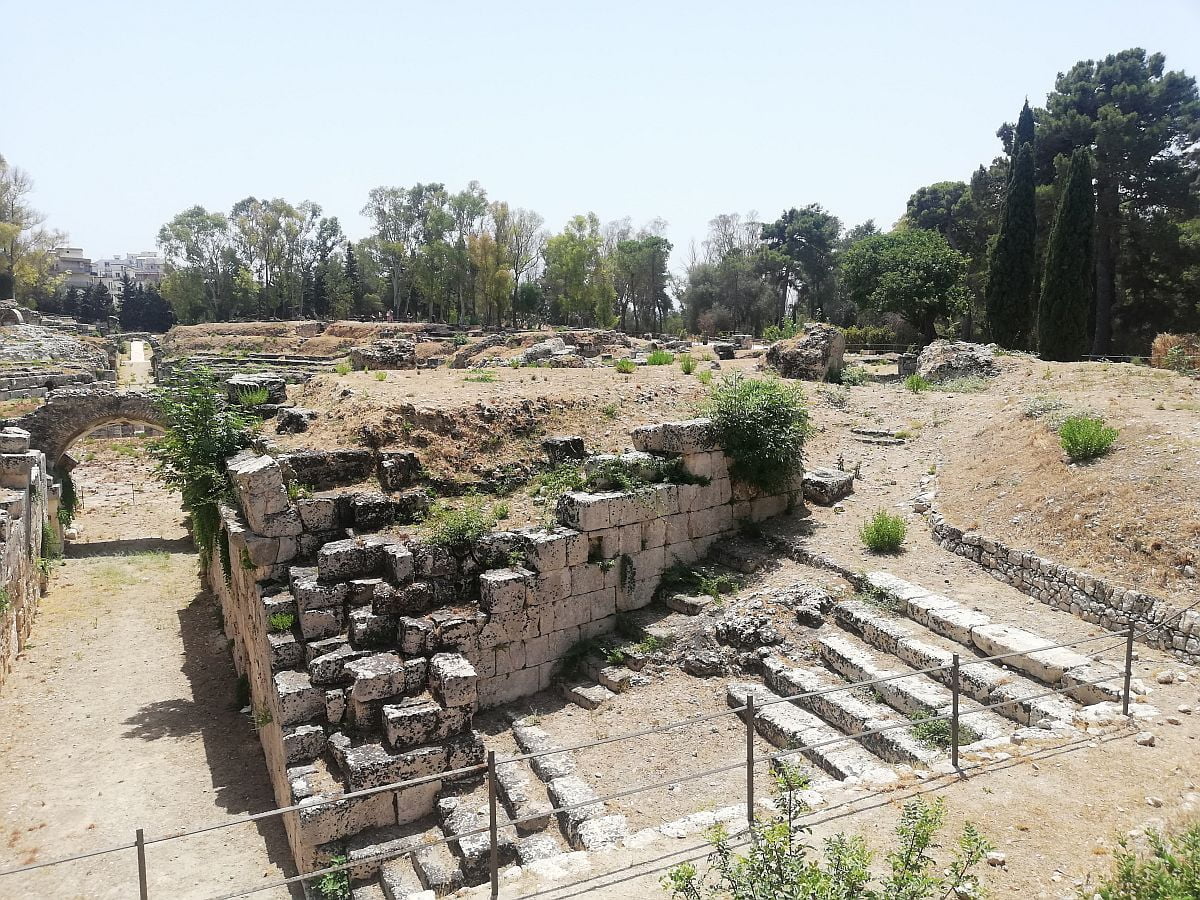The Roman amphitheatre in Syracuse (eastern Sicily) was the largest of its kind on the island. It was probably built at the end of the 1st-century BCE and was associated with the reconstruction of Syracuse in 21 BCE. It is possible that in the arena apart from gladiator fights and wildlife hunts, naumachia. The object was 140 meters wide and 119 meters long.
The building was built on rocky ground and was topped with a portico. In the western part of the building, there were tribunalia – seats of honour for the authorities. On the marble parts of the balustrades, Roman names of families (Statili, Pilati, Cestiani, Sabini and Risciani) were recorded. The railings are dated to the 2nd-3rd century CE.
There were eight entrances to the arena, and the arena itself was surrounded by a ditch 1 meter deep and half a meter wide. There were probably bars in the ditch that separated the audience from gladiators and wild animals. Currently, the ditch is covered.
In the central part of the arena, there is a large hole to which corridors led. In Roman times, they were obscured. The corridors were much simpler than those in Colosseum; they were mainly used to move machines serving the shows. The main entrance to the amphitheatre was from the south and was decorated with a fountain and niches on the wall. A system of complicated stairs led to the audience (cavea).
Around the amphitheatre, there are remains of old mines (northern and eastern parts of the building) that existed before the amphitheatre was built. In some places, there are votive niches where small terracotta figurines of the gods were placed.
In 399 CE Emperor Theodosius I ordered all gladiators’ schools closed; in 404 CE his son Emperor Honorius has officially banned the games in the arenas. After these events, the amphitheatre in Syracuse was used for other entertainment purposes, but with time it lost its importance and the arena gradually deteriorated.
The amphitheatre is located in the Archaeological Park of Neapolis in Syracuse.
- Roman amphitheater in Syracuse
- Roman amphitheater in Syracuse
- Roman amphitheater in Syracuse
- Roman amphitheater in Syracuse
- Niches next to the amphitheater in Syracuse












